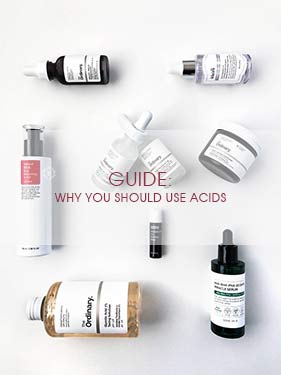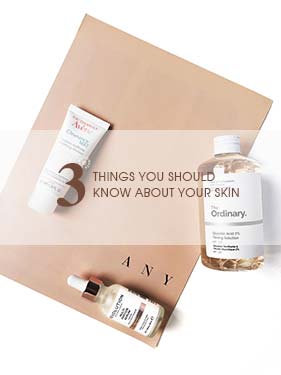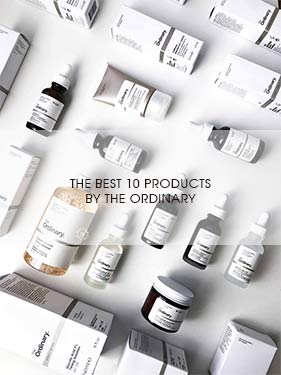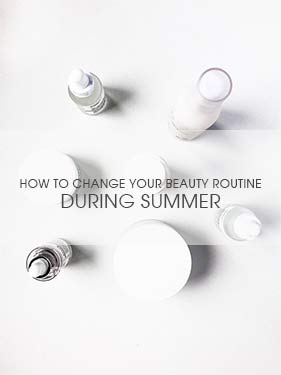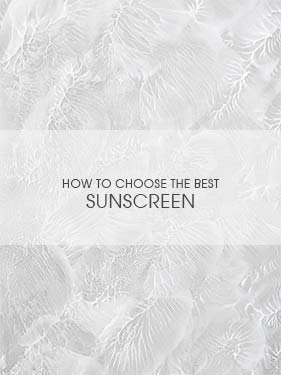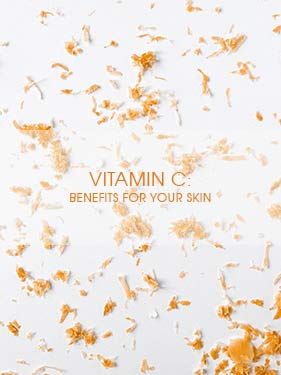Do you think you use your sunscreen the way you should? Are you sure? Sunscreen is a pillar of all your morning skincare routines, so using it correctly is key to keep a healthy, protected and beautiful skin. Let’s see how many of these sunscreen mistakes you have committed and let’s get them fixed!
Hello! I’ve wanted to share a new article about sunscreen for some time. Specifically, today I want to address some of the most common mistakes we make when using it.
You already know that sunscreen is one of the most important parts of your skincare routines, and if you can only use a single cosmetic, that should be it. Sunscreen is your great ally when it comes to preventing the damage that ultraviolet radiation causes to our skin, from cancer to wrinkles and spots.
I am aware that, if you are not used to using sunscreen, it can be a bit uncomfortable at first, especially if you have not found a sunscreen that suits your tastes and needs, so if that is your case, I recommend you to read this comparison of sunscreens (or this other one, which is a little more recent).
We all make mistakes when using cosmetics, but it is in our hands to learn and find a way to solve them to achieve a more effective result and and a more protected skin. I am convinced that you have ever made one of these mistakes:
- Not using sunscreen daily.
- Not using enough sunscreen.
- Not reapplying sunscreen.
- Using a sunscreen with SPF lower than 30.
- Using a sunscreen that does not defend you against UVA and UVB radiation.
- Using sunscreen only during summer.
- Not using sunscreen if you do not go outside.
- Forgetting certain areas when applying sunscreen.
1. NOT USING SUNSCREEN DAILY.
As I said at the beginning, sunscreen is a fundamental part of your basic skincare routines, the only one that you must never skip. When we begin grow an interest in taking care of our skin, we usually find an avalanche of messages and articles that insist on the importance of using this product daily, without exceptions. This is because sunscreen is the best barrier in preventing melanoma, hyperpigmentation, and many other skin problems.
As I explained in more detail in this other article, ultraviolet radiation is one of the great enemies of our skin. When it impacts against us, it generates a series of responses that involve obvious damage to our skin, since it favors the production of free radicals (which damage the collagen and elastin fibers responsible for keeping the skin firm and elastic) and promotes the production of melanin (which can lead to spots and even skin cancer). And what can you do if you want to prevent these problems? Use sunscreen daily.
2. NOT USING ENOUGH SUNSCREEN.
This is also a very basic and common mistake. Usually, when we apply sunscreen, it’s easy to think that a small amount is enough to protect our skin adequately (especially considering that some can be very heavy), but things don’t work that way.
In fact, a common misconception is that moisturizers and foundations with SPF will protect you from UV radiation, but I’m going to help you understand why, depending on the amount you use, they probably won’t protect you as much as you think.
When sunscreen is tested and its ability to protect against ultraviolet radiation is determined, tests are done using 2 milligrams of product for every square centimeter of skin, and this is the amount you should apply. Now you will surely ask yourself: how can I know how much 2 milligrams of product per square centimeter are? Usually a 1.25 gram measuring spoon is taken as an approximate reference, the amount that fits in it is what you need for the face (to this you must add the corresponding part for ears, neck, neckline, etc.).
A little trick to make sure you are using the correct amount of product is to apply a (generous) line over the index and middle fingers of your hand. You should use that amount for each of the following areas: face and neck, chest, abdomen, upper back, lower back, the front of each arm and leg, and the back of each arm and leg.
The first few times you use the correct amount of sunscreen, you will be surprised and think that you were probably wrong and took a lot more than you really should. In fact, if you limited yourself to using a moisturizer or makeup base with SPF, you will realize that it is not feasible to use that amount of a product that is not specifically a sunscreen. You may even wonder what to do with so much product, but you just have to spread it properly and make sure it is absorbed, only then will you properly protect your skin from ultraviolet radiation.
3. NOT REAPPLYING SUNSCREEN.
Now that we have covered the two most basic points when it comes to applying sunscreen, let’s go one step further: do you reapply the sunscreen or do you just use it before leaving home and then forget about it?
It must be taken into account that sunscreen decays as the hours go by and our skin is progressively less protected against ultraviolet radiation, so by reapplying it we get our skin to remain safe throughout the day. After all, just as you have to reapply the lipstick, you must also do it with the sunscreen. There are various studies on this topic and, although there is no perfectly established consensus regarding the period of time that should pass between each reapplication, there is a consensus regarding the importance of said reapplication.
There are some keys to knowing if you need to reapply sunscreen, and that is that you should do it every time you exercise, bathe, swim, or dry off with a towel. In addition to this, it has been observed that reapplication between 15 minutes and 2 hours after the first application helps us better cope with ultraviolet radiation. Afterwards, you should reapply your sunscreen every 2 hours (as long as the radiation levels require it, which I will talk about later).
When reapplying, the ideal would be to use your usual sunscreen, although I am aware that this is not always easy, especially if you use makeup or if you do not want to touch your face. To do this, a good solution is to use a mist sunscreen, like the La Roche-Posay Anthelios Invisible Anti-Shine Mist SPF 50, available on FeelUnique.
4. USING A SUNSCREEN WITH SPF LOWER THAN 30.
I do not want to mislead, and I want to make it very clear that the cosmetics that we can buy in the European Union go through very strict safety controls, so the sunscreens that are marketed here are safe and all protect you against the solar radiation to a greater or lesser extent. However, the key to understanding my emphasis on the importance of using a sunscreen with SPF 30 or higher is in how we use sunscreen on a regular basis.
So far I have talked to you about the most common mistakes when using sunscreen, and taking into account that the most common are not using it daily, using an insufficient amount or not reapplying it, it is key to use a product that gives you good protection in order to optimize the result you are looking for. Does this mean that if you use a sunscreen with SPF 15 it will not protect you? Not at all, but it is more effective to use one with a higher sun protection factor.
In general, the global criteria used when recommending one or the other sunscreens starts from something that we normally ignore and which you can access in any weather application: the levels of ultraviolet radiation. In your weather app, you will be able to see these levels in real time (ranging between 0 and 10) and thus you will know how much you are exposition you may get. When the levels of ultraviolet radiation are higher than 2, it is advisable to use a sunscreen of at least SPF 30.
5. USING A SUNSCREEN THAT DOES NOT DEFEND YOU AGAINST UVA AND UVB RADIATION.
In this other article you can find more detailed information about the different types of ultraviolet radiation. In it I already explained how, when we talk about SPF, we refer exclusively to protection against UVB radiation. In general, the criterion generally followed in the European Union is that (unless otherwise specified) protection against UVA radiation is at least one third of protection against UVB radiation.
For this reason, as a complement to SPF, other systems have emerged to allow us to assess protection against UVA radiation, such as PA, which is very widespread in Asia. In addition, sometimes manufacturers expressly indicate whether the sunscreen protects us against UVA rays. If nothing is specified in this regard, it is possible that your sunscreen does not provide as complete a defense as you would like against ultraviolet radiation, so I advise you to use one that protects you effectively. In my opinion, sunscreen manufacturers should make an effort and clearly indicate the protection that their products provide against UVA radiation, in this way we could be much more informed and better choose the product that best suits our needs.
6. USING SUNSCREEN ONLY DURING SUMMER.
It is very common to associate sunscreen with summer. If you don’t use it on a daily basis, it is likely that thinking about sunscreen will remind you of the days at the beach and the pool when you covered yourself with a thick cream that made you look like a ghost.
As you have seen so far, the reality is that it is essential to use sunscreen on a daily basis, and that includes cloudy or rainy days. Even if we can’t see the sun or feel its heat, ultraviolet radiation reaches us even on cloudy days, so it is a serious mistake to think that you should only use sunscreen in summer. I already said it at the beginning of the article and I will never get tired of repeating it: you have to use sunscreen every day, without exception.
7. NOT USING SUNSCREEN IF YOU DO NOT GO OUTSIDE.
This mistake is as common as the previous one. It would be easy to think that if one day you don’t leave the house you don’t need to use sunscreen, right? This is only valid if you don’t have windows, but that is most likely not the case for you.
There are studies that show that ultraviolet radiation is able to reach us even through windows. This means that, although you may think that at home or in the office you do not need sunscreen, ultraviolet radiation is going to hit your skin anyway, damaging it without you realizing it (and while you think you are well protected). The solution is very simple: use sunscreen even when you are going outside.
8. FORGETTING CERTAIN AREAS WHEN APPLYING SUNSCREEN.
The last mistake I want to talk about in this article is forgetting certain areas when applying sunscreen. In general, when we do our skincare routine, it is very common to focus exclusively on our face, and with this we ignore other parts of our body that are also exposed to ultraviolet radiation, such as the neck or décolletage.
When you apply sunscreen you should do it on each and every one of those areas exposed to ultraviolet radiation, and surely more than once you have forgotten to do it on the neck, décolletage, ears, eyelids, or hands (between many others). Make sure to keep all your skin protected and thus you will be able to prevent various diseases, as well as various damages to your skin.
As you can see, something as simple as applying sunscreen involves a conscious process in which you must think about what you are doing and if you are doing it correctly. The good news is that you will quickly acquire good habits and get used to using sunscreen properly.
If you liked this article and want to continue learning how to take care of your skin, I advise you to read these others:
Do you want to learn to take better care of your skin? You can see an index of all my informative posts here.
● Follow me on Instagram, Facebook, TikTok and Pinterest.
● Share, comment and like my posts on social media.
● Shop through my links to help me keep up with this blog.

I’m Nacho and I’m passionate about skincare. I really enjoy learning and sharing my knowledge about skincare and I read scientific papers so you don’t have to. I want to break stereotypes because I believe skincare has no gender: skin is skin.


